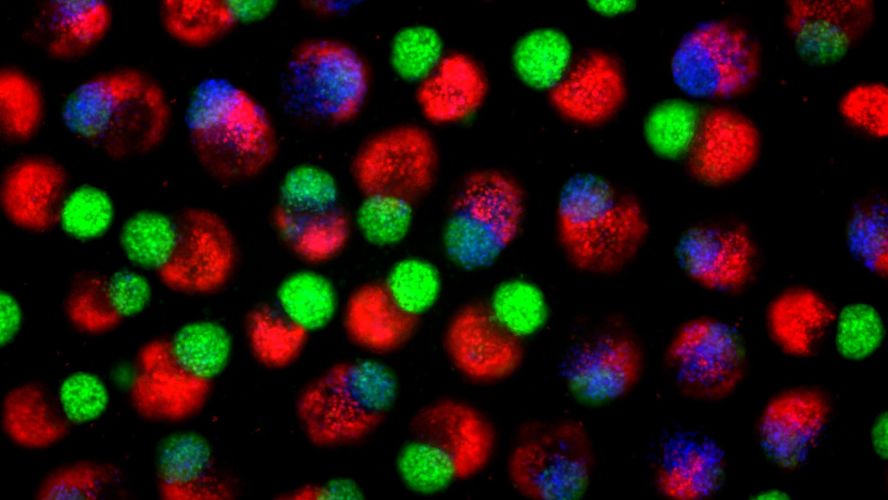New lab-grown human embryo model produces blood cells

Cambridge researchers have found a new way to produce human blood cells in the lab that mimics the process in natural embryos – a discovery that holds potential to simulate blood disorders like leukaemia, and to produce long-lasting blood stem cells for transplants.
University of Cambridge scientists have used human stem cells to create three-dimensional embryo-like structures that replicate certain aspects of very early human development - including the production of blood stem cells.
These structures, which the scientists have named ‘hematoids’, are self-organising and start producing blood after around two weeks of development in the lab - mimicking the development process in human embryos. They differ from real human embryos in many ways, and cannot develop into them because they lack several embryonic tissues, as well as the supporting yolk sac and placenta needed for further development.
Hematoids hold exciting potential for a better understanding of blood formation during early human development, simulating blood disorders like leukaemia, and for producing long-lasting blood stem cells for transplants.
The human stem cells used to derive hematoids can be created from any cell in the body. This means the approach also holds great potential for personalised medicine in the future, by allowing the production of blood that is fully compatible with a patient’s own body. The new method mimics the natural developmental process, based on a self-organising human embryo-like model, where the cells’ intrinsic support environment drives the formation of blood cells and beating heart cells within the same system.
The findings are published today in the journal Cell Reports.
Professor Azim Surani, Emeritus Fellow of King’s, Director of Research at Cambridge’s Gurdon Institute and senior author of the paper, said:
This model offers a powerful new way to study blood development in the early human embryo. Although it is still in the early stages, the ability to produce human blood cells in the lab marks a significant step towards future regenerative therapies - which use a patient’s own cells to repair and regenerate damaged tissues.
Professor Surani is the winner of the 2025 Kyoto Prize in the Life Sciences and Medicine. Read more about his work and this prestigious award here.
Image above shows day 2 hematoids: human stem cells start to self-organize into three-dimensional clumps establishing primary germ layers, including endoderm (red), ectoderm (green) and mesoderm (blue) derivatives. Primary germ layers give rise to all the tissues and organs of the body.
